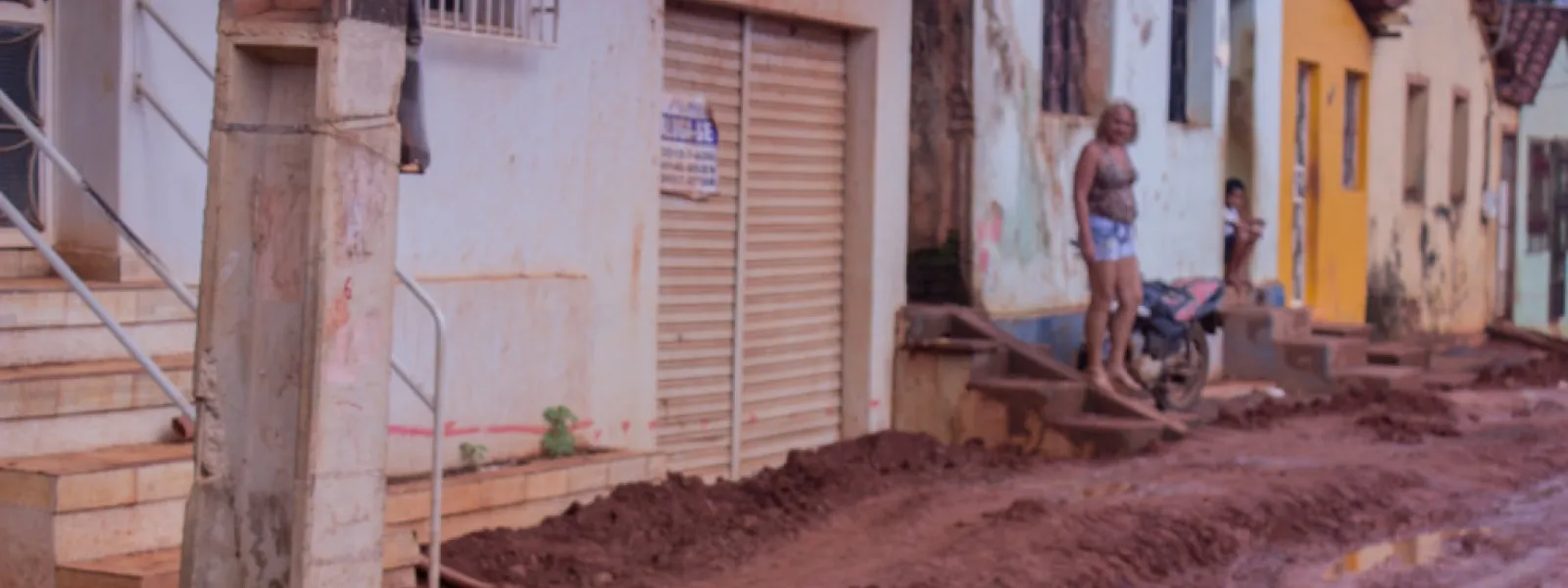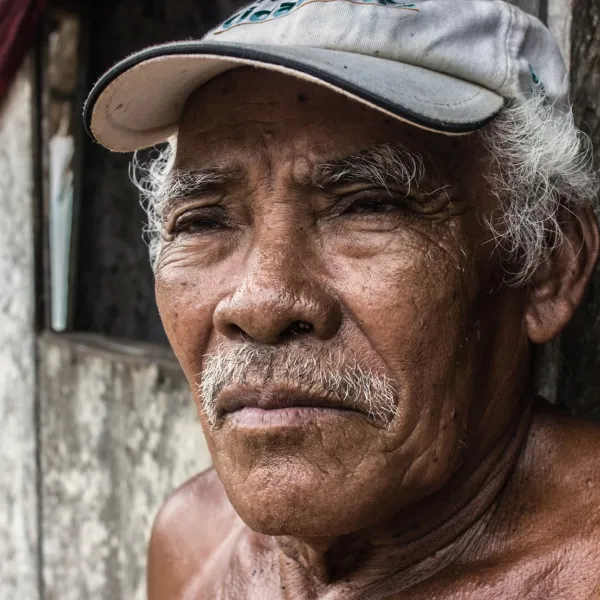
Project
Photo: Maíra Irigaray / Amazon WatchHolding Brazil accountable for the Belo Monte Dam
When fully operational, Belo Monte will be the third-largest dam in the world, constructed in one of the most important ecosystems on the planet: the Amazon rainforest. It sits on the Xingu River in Pará, a state in northern Brazil. The reservoir will cover 500 square kilometers of forest and farmland—an area the size of Chicago.
For the people of the Xingu, construction of Belo Monte has meant loss of access to water, food, housing, work and transportation. At least 20,000 people have been displaced.
The government and construction consortium began to construct the dam without first consulting the people of the region, many of whom are indigenous. They flouted international human rights law, which requires the free, prior and informed consent of affected indigenous communities. Brazil also failed to comply with precautionary measures issued by the Inter-American Human Rights Commission, which were intended to protect the life, health, and integrity of local communities.
Though Belo Monte began operations in May 2016, it is not yet operating at full capacity. In April 2016, a federal court suspended the dam's operating license because the consortium in charge did not complete basic sanitation works in Altamira, the city nearest to and most affected by the dam.
Partners:

Related projects
Inter-American Commission admits case on human rights violations in La Oroya
FOR IMMEDIATE RELEASE: August 19, 2009 IACHR Will Examine Case Against Peru for Violating the Human Rights of Residents of La Oroya, A City Extensively Contaminated by the Doe Run Peru Smelter ► According to the Inter-American Commission on Human Rights of the Organization of American States, Peru may be violating the rights to life, personal integrity, and to information and access to justice, due to toxic pollution from Doe Run Peru’s multi-metal smelter in La Oroya, Peru. ► The potential extension of an environmental management plan for the complex, announced by Peruvian President Garcia, must include effective measures to guarantee against further human rights violations. WASHINGTON, D.C. – The Inter-American Commission on Human Rights (IACHR) will examine a complaint against Peru for human rights violations in La Oroya, a Peruvian town described as one of the “most contaminated places on earth.” AIDA, Earthjustice and CEDHA submitted this case in 2006 with the local support of the Peruvian Society for Environmental Law (SPDA). In the Inter-American Commission’s recent report accepting the case, it “considers that the alleged deaths and/or health effects of the presumed victims are a consequence of acts and omissions by the State with regard to environmental pollution arising from the multi-metal complex operating in La Oroya, which if proved could constitute a violation of the rights conferred in Articles 4 [life] and 5 [personal integrity] of the American Convention.” “This claim stems from the lack of action by Peru, considering that the government has known about the impacts of the pollution on persons and the environment for at least ten years without acting to resolve the contamination problem,” states AIDA Co-Director, Astrid Puentes. “Even if some steps have been taken in La Oroya, the measures implemented have not been effective in safeguarding health and the environment, as noted by the Peruvian Constitutional Court, the Ministry of Health, and the Commission.” “This is excellent news that brings us hope that things will finally improve in La Oroya” said one of the case’s plaintiffs, whose names are confidential. In 2006 the Constitutional Court of Peru ordered actions to protect public health in the city. The “unjustified delay” in complying with this order may also constitute a violation of the human rights of access to justice and judicial guarantees. The Commission will also investigate whether Peru’s actions violate the right to access to information and freedom of expression. In addition to serious health effects, this case alleges unjustifiable limits to accessing information about the community’s environmental and human health situation and pressure toward those trying to distribute this information. The IACHR’s decision to examine the complaint coincides with negotiations between the Peruvian Government and the Doe Run Peru company, owner of the Multi-Metal Complex, over a potential extension for the complex’s Environmental Management Plan (PAMA). The effective implementation of this plan would improve environmental quality in the area. There is little certainty whether the company will ever meet its obligations for environmental controls under this Plan, as the government has already granted several extensions. The Commission will likely monitor the compliance process and consider the results in any final decision regarding the violations of human rights in Peru. The PAMA does not actually allow for extensions, and the government could fine the company for violating the Plan. If Peru does not impose fines, it would further prolong the unjustified delay of actions necessary to control the pollution in La Oroya and protect the human rights of its inhabitants,” states José Luis Capella, of SPDA. “Any future decision regarding the PAMA must include effective measures to enforce the obligations to improve health and the environment in the city already contained within the Plan.” Connected with this case, the IACHR also requested in 2007 that Peru implement urgent precautionary measures to guarantee the life and safety of La Oroya residents. These measures insist that Peru provide specialized medical evaluations and treatment for those affected by the toxic pollution. “The IACHR’s acceptance of this case is vital to protect human rights in La Oroya. It demonstrates that the severe pollution in the city has an impact, not only on the environment, but on human health, and that it affects their human rights,” stated Martin Wagner Director of the International Program of Earthjustice. “We hope the case has positive impact on the protection of human rights in La Oroya and in the region."
Read moreCosta Rican Constitutional Chamber Orders the Fisheries Authority to Issue Regulations Within the Next 3 Months
PRESS CONTACT: Gladys Martínez de Lemos, AIDA (506) 83214263 [email protected] Costa Rican Constitutional Chamber Orders the Fisheries Authority to Issue Regulations Within the Next 3 Months SAN JOSÉ, Costa Rica, May 20, 2009 – The Constitutional Chamber of the Supreme Court of Justice of Costa Rica favorably resolved an injunction brought by students from the University of Costa Rica, represented by Attorney Alvaro Sagot and supported by the Interamerican Association for Environmental Defense (AIDA) and other Costa Rican NGOs (APREFLOFAS, CEDARENA, Fundación Keto, Humane Society International, Justicia para la Naturaleza, MARVIVA, PRETOMA and PROMAR)., In its ruling, The Chamber ordered the Executive Authority, within a maximum of 3 months, to administrate the fishery law in a manner that protects the constitutional right to a healthy environment. The Chamber also mandated that this process be carried out with public participation, which is essential to protecting this human right. “This decision is vital to the protection of coastal marine resources. The Fishery and Aquaculture Law had given the Executive Authority a period of 90 days to promulgate regulations, starting from April 25th, 2005 when the law was first published. However, after more than four years, the Executive Authority, represented by INCOPESCA, had still not issued the regulation,” stated attorney Gladys Martínez. “We understand the complexities of the issue, but these cannot be excuses to continue leaving a legal void that directly affects the conservation of Costa Rican and the planet’s, resources”, added Martínez. The plaintiffs petitioned the Constitutional Chamber to protect the human right to a healthy environment and balanced ecology and assure compliance with international obligations by carrying out its responsibility to promulgate regulations to implement this law. There are fundamental aspects to marine resource protection, such as aquaculture development, illegal fishing in protected areas, and containment of excessive fishing, the control of which is nonexistent or deficient, making this regulation imperative. “We at AIDA applaud the Chamber’s decision, as it recognizes the importance of effective protection of marine biodiversity and establishes a precedent of requiring public participation in the process”, commented Anna Cederstav from California, Co-Director of AIDA, “Given the grave situation of the world’s oceans and marine resources, and the necessity to counteract excessive exploitation and avoid impacts to current and future generations, it is urgent that this issue be resolved as soon as possible. Furthermore, Costa Rica has the opportunity to be an example in the conservation of oceans and their resources”, concluded Cederstav.
Read moreColombian Constitutional Court Admits AIDA's Complaint Against Mining Code (Spanish Text Only)
CORTE CONSTITUCIONAL ADMITE NUEVA DEMANDA CONTRA CÓDIGO DE MINAS PARA DEFENDER EL PRINCIPIO DE PRECAUCIÓN FRENTE A LAS ACTIVIDADES MINERAS PARA PUBLICACIÓN INMEDIATA CONTACTOS: Jerónimo Rodríguez, AIDA, Tel. (571) 2681804 Andrés Idarraga, CENSAT, Tel. (571) 2440581 [email protected] [email protected] BOGOTÁ, 20 de mayo de 2009.- La Corte Constitucional colombiana admitió esta semana la acción de inconstitucionalidad presentada por la Asociación Interamericana para la Defensa del Ambiente (AIDA), CENSAT – Agua Viva, el Observatorio de Conflictos Ambientales de la Universidad de Caldas y la Corporación Gestión por los Intereses Ambientales y Públicos (Iniciativa GESAP) contra los artículos 203 y 213 del Código de Minas, que permiten el uso de los recursos naturales para la exploración minera sin licencia ambiental y limitan las causales por las que las autoridades ambientales pueden negar una licencia ambiental para actividades mineras. Los artículos del Código de Minas demandados violan la Constitución de Colombia y la legislación ambiental internacional. Estos artículos priorizan la actividad minera sobre la protección ambiental, al punto de limitar las capacidades de las propias autoridades para verificar las condiciones de la explotación, y eventualmente autorizar la exploración y explotación con condiciones que sean ambientalmente sostenibles. Por esto, se violan entre otros, los principios de desarrollo sostenible y el principio de precaución que son parte fundamental de nuestra legislación. “Reconocemos que la minería es una industria importante para nuestro país, pero también lo es la protección de los recursos naturales, que garantizan la existencia misma de la especie humana en la actualidad y en el futuro. Por esto solicitamos a la Corte que aplique el principio de desarrollo sostenible reconocido en nuestra Constitución para que la minería se implemente sin la generación de daños severos e irreversibles a zonas estratégicas, como los páramos, y de las que dependen muchas comunidades”, señaló Jerónimo Rodríguez, asesor legal de AIDA en Colombia. Esta demanda se une a la presentada por AIDA y otros contra el artículo 34 del Código de Minas, que está pendiente de sentencia por la Corte Constitucional Colombiana. Ambas demandas recogen e insisten sobre las preocupaciones del Ministerio de Ambiente y de la Procuraduría General de la Nación frente a los efectos de las actividades mineras en el ambiente y la necesidad imperiosa de control, sin debilitar aún más las normas. “Buscamos con esta demanda de inconstitucionalidad la efectiva protección al ambiente y que el uso ocasional o transitorio de los recursos naturales en las actividades de exploración deba evaluarse por las autoridades ambientales. Además que las licencias ambientales no estén limitadas por causales formales, sino que las autoridades ambientales puedan, cuando sea necesario para protección ambiental y del interés público, negar licencias para la minería en aplicación del principio de precaución y de normas ambientales aplicables”, concluyó Rodríguez. AIDA es una ONG legal ambiental hemisférica que trabaja para fortalecer la capacidad de las personas para garantizar su derecho individual y colectivo a un ambiente sano por medio del desarrollo, aplicación y cumplimiento efectivo de la legislación nacional e internacional. Entre otros temas, AIDA prioriza la protección del derecho al agua y asegurar recursos de agua dulce adecuados para las comunidades y los ecosistemas.
Read more